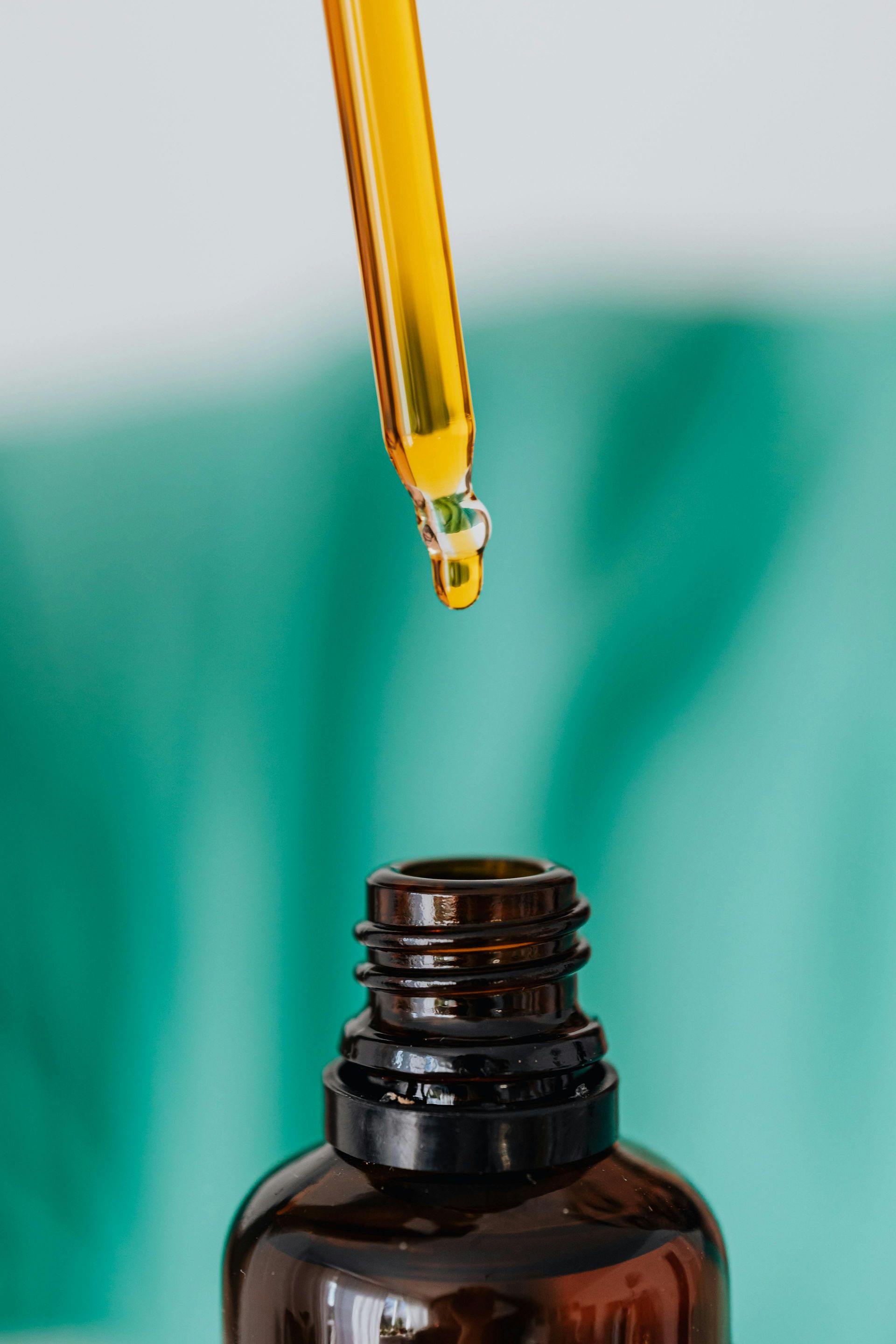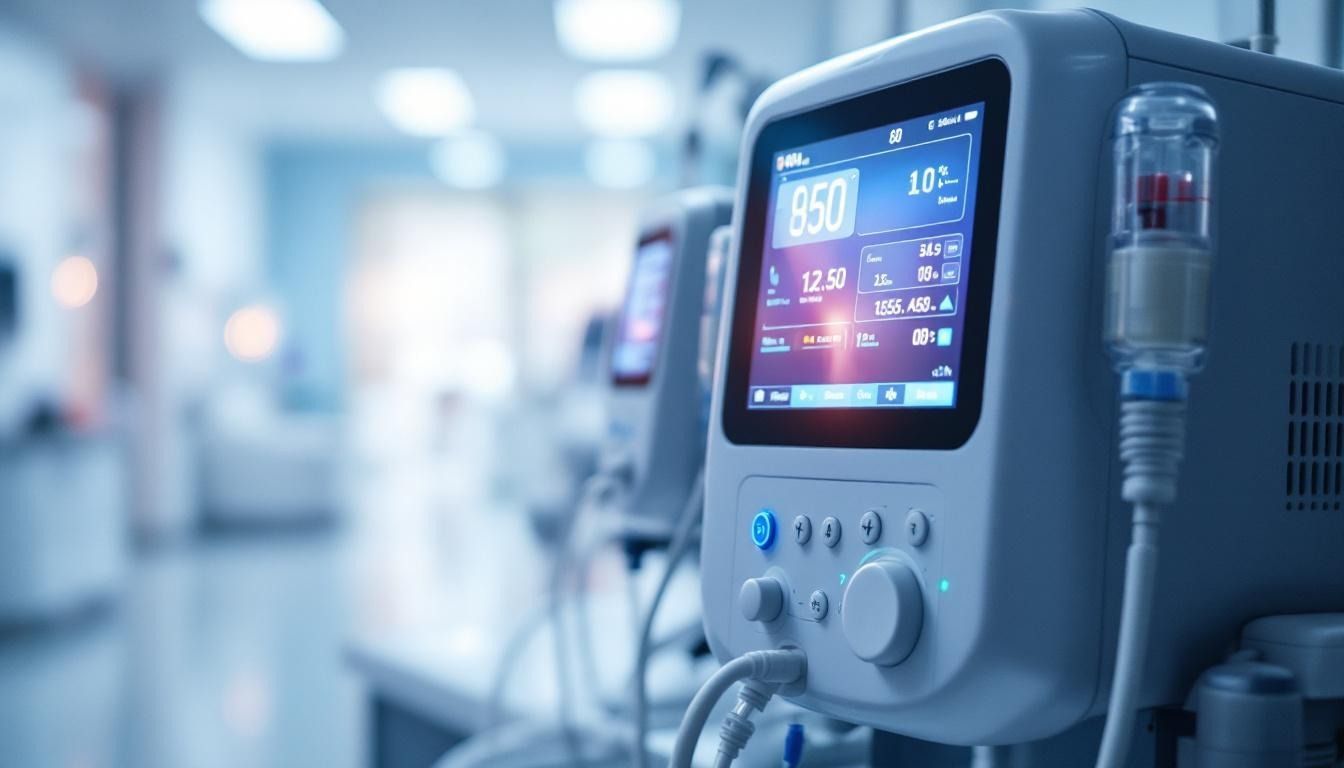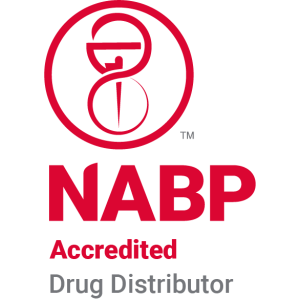Compounding safety for infusion care
Introduction to the Critical Importance of Safe Infusion Compounding
In the landscape of modern healthcare, infusion therapy is pivotal for delivering medications, nutrition, and fluids directly into patients' bloodstream. Ensuring the safety and efficacy of compounded sterile preparations (CSPs) is essential, given the risks associated with contamination and errors. This article explores essential safety considerations, regulatory standards, technological innovations, and best practices that collectively uphold the highest standards of infusion care safety.
Key Safety Considerations in Infusion Care Compounding
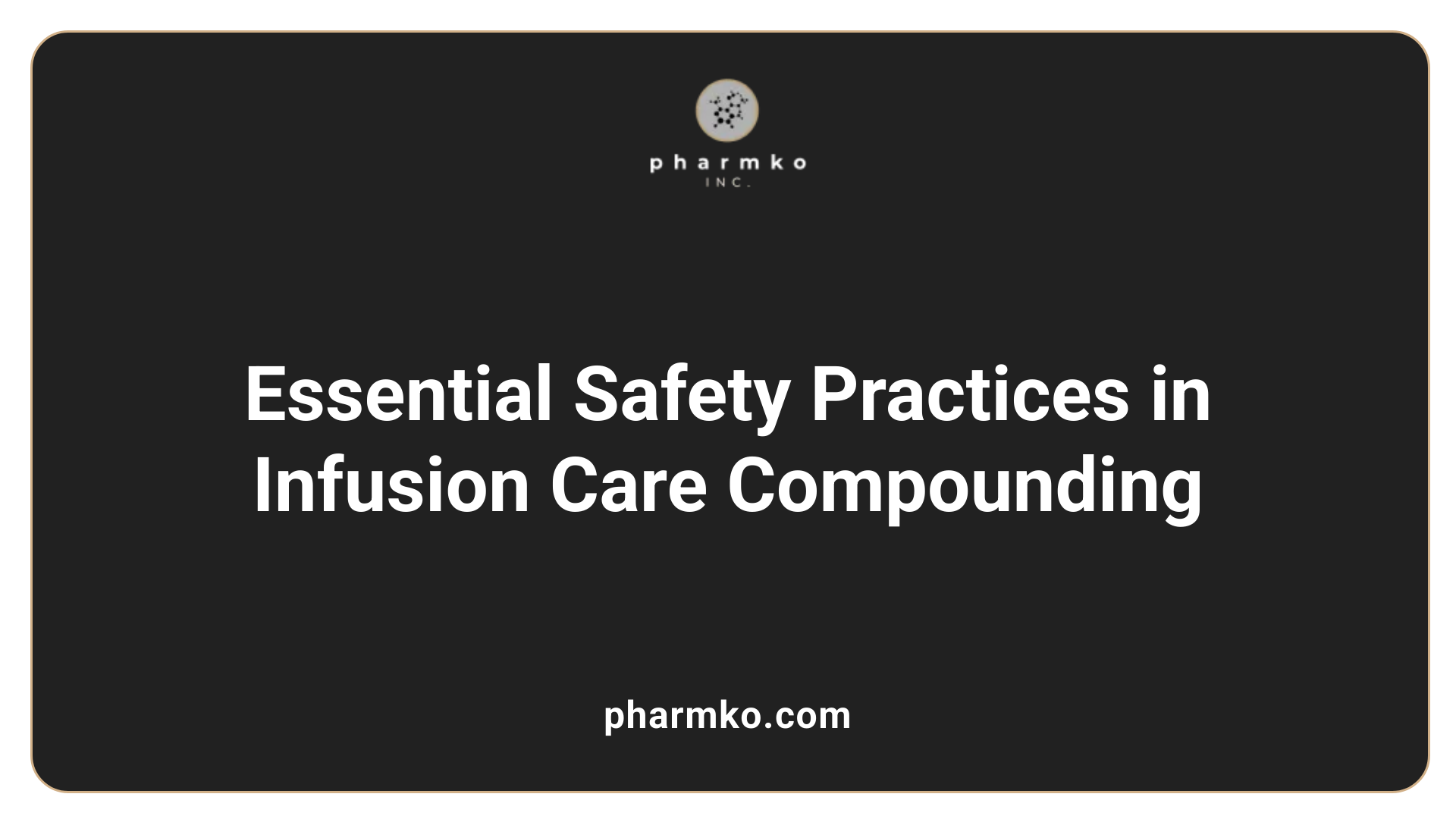
What are the key safety considerations in infusion care compounding practices?
Ensuring patient safety during infusion therapy depends on several critical practices. First, strict hand hygiene and proper aseptic techniques are essential to prevent contamination of sterile medications and infusion devices.
Environmental controls play a vital role as well. Compounding should occur in clean rooms with appropriate airflow, such as laminar airflow workbenches, to maintain sterility. Regular environmental monitoring and audits help detect any breaches early.
Monitoring vital signs during infusion therapy allows healthcare providers to identify adverse reactions like respiratory depression or allergic responses promptly. Use of advanced safety systems, such as continuous respiratory monitoring with PCA therapy, can further improve safety by catching issues before they become severe.
Additionally, adherence to protocols for changes in dressings, tubing, and caps minimizes infection risks. It is important that all personnel are trained and competent in these safety procedures.
Finally, timely reporting of safety concerns, complications, or equipment failures through established pathways ensures immediate action can be taken to protect patients. Consistent regulation adherence and proper documentation support safe and effective infusion care.
| Safety Practice | Description | Importance |
|---|---|---|
| Aseptic Technique | Using sterile equipment and procedures | Prevents microbial contamination |
| Hand Hygiene | Proper hand washing before and after procedures | Reduces transmission of pathogens |
| Environmental Controls | Clean rooms, air filtration, environmental testing | Maintains sterility of preparations |
| Vital Sign Monitoring | Continuous or frequent checks during infusion | Detects adverse reactions early |
| Reporting Safety Concerns | Documenting and communicating issues promptly | Enables quick response and mitigation |
Adhering to these practices, along with ongoing staff training and compliance with USP standards and industry regulations, ensures a high level of safety in infusion care compounding.
Standards and Guidelines for Sterile Compounding in Infusion Therapy
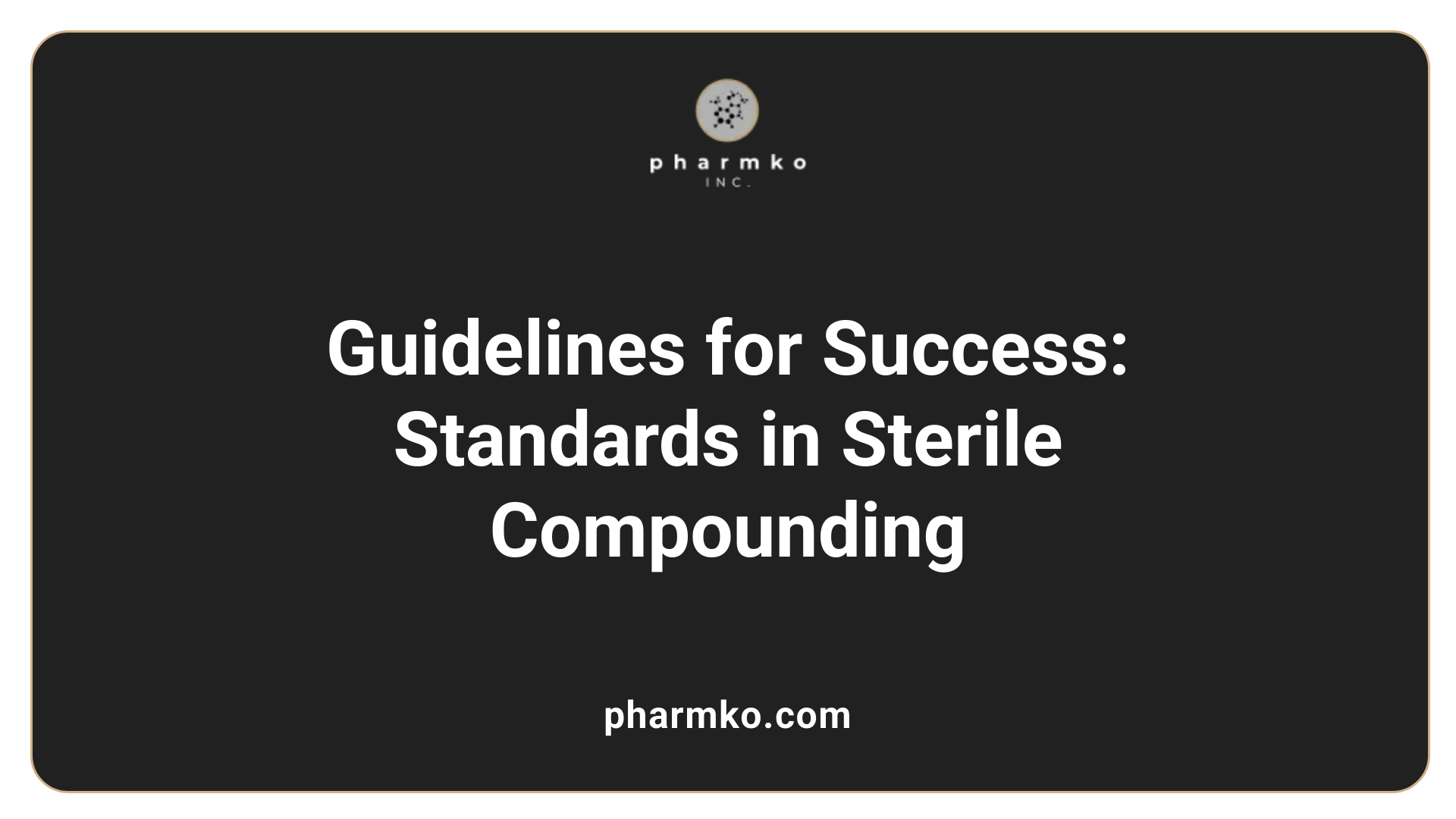
What are the standards and guidelines for sterile compounding in infusion therapy?
Ensuring safety and quality in infusion therapy relies heavily on strict adherence to established standards and guidelines for sterile compounding. The primary framework is provided by USP Chapter <797>, which sets comprehensive requirements for sterile formulation practices. This chapter covers everything from facility design, environmental controls, and personnel training to validation and documentation processes.
USP <797> emphasizes the importance of personnel competency, advocating for regular training, testing, and ongoing education to maintain high standards of aseptic technique. Proper environmental monitoring, including air and surface sampling, is crucial for early detection of contamination risks. The chapter also promotes the use of validated cleaning procedures, appropriate storage conditions, and beyond-use dating to prevent microbial growth.
A significant recent update to USP <797> was issued in 2022, with implementation beginning in November 2023. The revision introduces more defined categories for compounded preparations—low, medium, and high risk—based on factors like environment, personnel, and materials. It also enforces stricter validation methods and quality assurance practices to promote consistency and safety.
External organizations such as the American Society of Health-System Pharmacists (ASHP) and the Institute for Safe Medication Practices (ISMP) complement USP standards with best practice guidelines. Tools like Simplifi 797 help automate aspects of documentation, environmental monitoring, and staff competency tracking. These integrated standards, inspections, and accreditation processes, often conducted by bodies like The Joint Commission, work together to reduce errors and contamination risks, ultimately aiming to protect patients receiving infusion therapies.
Regulatory Requirements and Compliance for Compounded Sterile Preparations

What are the regulatory requirements and compliance standards for compounded sterile preparations?
Compounded sterile preparations (CSPs) are subject to strict regulatory standards designed to ensure their safety and efficacy. The primary set of guidelines comes from USP Chapter <797>, which provides comprehensive instructions for sterile compounding practices. These standards cover key aspects such as personnel training and competency assessments, environmental controls like cleanroom standards, cleaning protocols, and rigorous documentation processes.
USP <797> was last revised in 2022, with implementation requirements active from November 2023. The update introduced new classifications for CSPs based on risk levels—low, medium, or high—depending on factors including the physical environment, personnel training, and storage conditions. It also stressed the importance of environmental monitoring through methods like surface sampling and media fill testing, which simulate actual compounding conditions to detect possible microbial contamination.
Enforcement of these standards is carried out through regular inspections by state pharmacy boards, the FDA, and accreditation agencies such as The Joint Commission (JCAHO), ACHC, and CHAP. Pharmacies must maintain detailed Standard Operating Procedures (SOPs) that outline procedures for aseptic technique, equipment sterilization, and quality control. These SOPs should be regularly reviewed and updated to reflect the latest regulatory standards.
In addition, federal regulations—most notably Section 503A of the Federal Food, Drug, and Cosmetic Act—define responsibilities for traditional pharmacy compounding, allowing states to oversee compliance when conditions are met. Pharmacies are also encouraged to implement QA/QC programs utilizing tools like Simplifi 797, an educational platform designed to help staff understand and adhere to current standards.
Overall, compliance requires a proactive approach encompassing comprehensive documentation, staff training, environmental monitoring, and adherence to national and local regulations. This integrated effort helps prevent contamination, safeguard patient health, and maintain high-quality standards in sterile compounding.
Environmental Environment Needs for Sterile Compounding

What type of environment is required for sterile compounding of injectable and infusion medications?
A sterile, controlled environment such as a cleanroom with regulated air quality, pressure, and temperature is required to eliminate biological contamination and ensure patient safety. Ensuring sterility during compounding prevents microbial growth and contamination, which could lead to serious infections or adverse reactions.
Cleanrooms with HEPA filtration
Healthcare facilities typically use cleanrooms equipped with High Efficiency Particulate Air (HEPA) filters. These filters remove over 99.97% of airborne particles as small as 0.3 microns. Cleanrooms are designed to prevent dust, microbes, and other contaminants from contaminating compounded sterile preparations (CSPs). The airflow within these rooms is often unidirectional to maintain a sterile environment.
Air quality standards
The quality of air in sterile compounding areas is critical. Standards define the allowed levels of airborne microbial contamination, particulate matter, temperature, and humidity levels. The United States Pharmacopeia (USP) Chapter <797> provides guidelines for maintaining air quality, recommending that grade A areas (the most critical zone) have at least 30 air changes per hour with HEPA-filtered air.
Temperature and humidity controls
Maintaining proper temperature and humidity is essential for both microbial control and the integrity of medications and equipment. Typically, controlled environments maintain temperatures around 20-22°C (68-72°F) and humidity levels between 30-60%. Proper environmental controls safeguard against microbial proliferation and chemical instability of compounded medications.
Environmental monitoring
Regular environmental monitoring is a vital part of ensuring ongoing compliance with sterility standards. It involves sampling and testing air, surfaces, and personnel to detect microbial contamination. Monitoring should be performed at scheduled intervals and after any deviation or maintenance activities. Results guide corrective actions, helping maintain the highest standards for patient safety.
High-quality sterile compounding relies heavily on a rigorous environment that incorporates these elements. Properly maintained cleanrooms, air systems, environmental controls, and monitoring protocols are fundamental to safeguarding the sterile integrity of compounded medications.
Technological Innovations Enhancing Infusion Safety
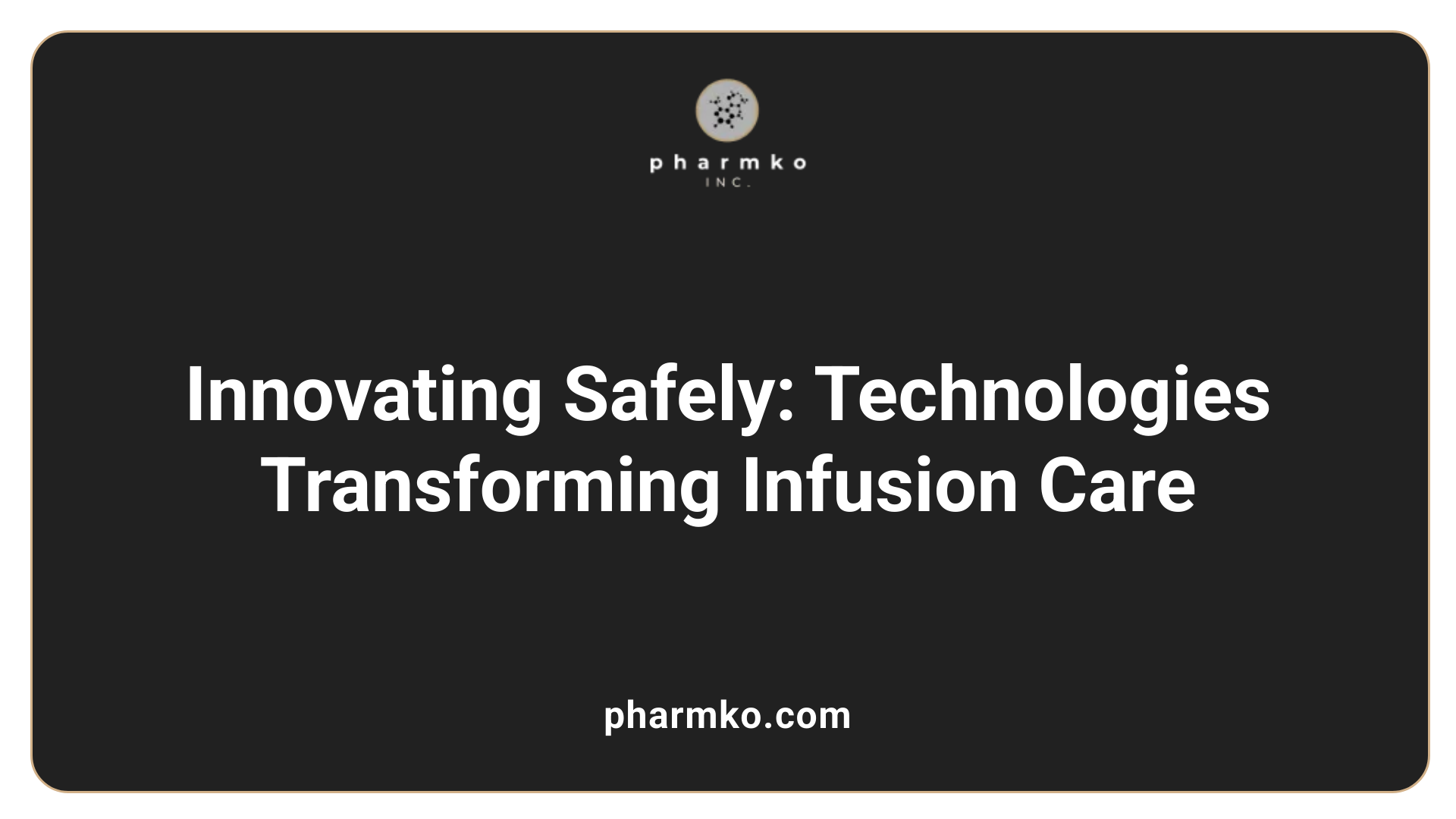
How do technological advancements improve safety in infusion preparation?
Recent technological innovations have revolutionized the safety protocols in infusion medication preparation and administration. Smart infusion pumps, equipped with dose error reduction systems and extensive drug libraries, actively help prevent programming mistakes that could lead to dangerous overdoses or underdoses. These devices include real-time alerts that warn clinicians of potential errors before medication delivery.
Closed-system transfer devices (CSTDs) and automated compounding systems play a crucial role in minimizing contamination risks during drug preparation. CSTDs ensure a sealed environment, preventing microbial contamination and drug vapor escape, while automated systems enhance precision and consistency in compounding sterile medications.
Moreover, advanced sensors such as capacitive liquid level detectors and pressure alarms help detect early signs of infiltration or extravasation, which can be critical in preventing tissue damage or other adverse events. Ultrasound-guided catheter placement minimizes insertion complications, reducing infection risks and improving patient comfort.
Integration of these devices with electronic health records (EHRs) and IoT-enabled monitoring tools allows continuous oversight of infusion processes. Real-time data transmission ensures early error detection, facilitates timely interventions, and supports better communication among healthcare providers.
Despite these breakthroughs, challenges remain. User errors and device complexities can hinder optimal safety if staff are not thoroughly trained. Therefore, simplifying interfaces and providing comprehensive training programs are essential to leverage these technologies fully.
Overall, technological advancements are making infusion therapy safer, more accurate, and more reliable, ultimately improving patient outcomes and reducing adverse events.
Best Practices for Maintaining Safety Standards in Infusion Therapy

What are best practices to maintain safety standards in infusion therapy?
Ensuring the safety of patients receiving infusion therapy involves multiple critical steps rooted in industry standards and ongoing professional commitment. A fundamental practice is rigorous adherence to established guidelines such as USP <797> and <800>. These standards provide detailed protocols for sterile compounding, environmental controls, personnel hygiene, and storage, which are essential to preventing microbial contamination and ensuring medication integrity.
Staff training plays a vital role in maintaining high safety standards. Regular competency assessments and continuous education ensure healthcare professionals are up-to-date with the latest practices, technologies, and regulatory requirements. Proper training empowers staff to handle medications correctly, identify potential errors, and react swiftly to adverse events.
The integration of advanced IV safety technologies significantly enhances safety. Smart infusion pumps equipped with dose-error reduction systems, continuous respiratory monitoring modules, and incident alert features help minimize medication errors and detect complications early. These tools work alongside clinical judgment to improve patient outcomes.
Implementing standardized protocols across all levels of care ensures consistency. These protocols cover medication preparation, administration techniques, vascular access management, and emergency procedures, reducing variability and human error. Routine audits and adherence checks reinforce compliance and foster a culture of safety.
Interdisciplinary communication among physicians, pharmacists, nurses, and caregivers is indispensable. Effective dialogue facilitates comprehensive patient assessments, personalized treatment planning, and swift response to any complications. Clear documentation and shared understanding help coordinate care seamlessly.
In addition, educating patients and their caregivers on infusion procedures, medication schedules, and warning signs promotes safety at home and in outpatient settings. Combining these practices with ongoing quality improvement initiatives and compliance with regulatory standards helps create a safe, reliable environment for infusion therapy.
Distinguishing Licensed Pharmacies from Unregulated Entities

What distinguishes licensed pharmacy compounding from unregulated entities?
Licensed pharmacy compounding, especially when conducted in accordance with state and federal regulations, is usually based on adherence to strict quality and safety standards. Traditional compounding pharmacies are overseen by their respective State Boards of Pharmacy, which conduct inspections to ensure compliance with standards related to ingredients, sanitation, personnel training, and facility requirements. They must follow established industry guidelines such as USP chapters <797> and <800>, which specify procedures for sterile and hazardous compounding.
However, these pharmacies are not directly regulated by the FDA for manufacturing practices unless they are registered as outsourcing facilities under Section 503B of the Federal Food, Drug, and Cosmetic Act. Such FDA-registered facilities are subject to Current Good Manufacturing Practices (CGMP), undergo regular inspections, and are required to produce compounded medications in large batches, ensuring high levels of quality control.
Unregulated entities or illegal compounding practices lack the oversight of both state pharmacy boards and the FDA. These operators may not follow proper hygiene, use unapproved or expired ingredients, or neglect sterile techniques, significantly increasing safety risks. Compared with licensed pharmacies, they often lack documentation, quality assurance programs, and proper facility standards.
The main difference lies in the scope of regulation and standards. Licensed pharmacists generally comply with recognized standards for ingredient quality, environmental controls, and personnel competence. When an entity is FDA-registered, it must meet even stricter manufacturing regulations, including testing, validation, and batch documentation. Unregulated entities, on the other hand, may operate without licensing, proper oversight, or adherence to recognized safety practices, which elevates the risk of contamination, medication errors, and adverse health events.
In essence, the distinction is based on the level of regulatory oversight, compliance with established standards, and the transparency of manufacturing processes, with licensed and especially FDA-registered entities maintaining more rigorous safeguards to protect patient safety.
Infection Prevention and Control in Infusion Safety

What infection prevention measures are critical in infusion safety?
Infection prevention is at the core of safe infusion therapy. To minimize infection risks, healthcare providers must rigorously follow multiple safety practices.
First, strict hand hygiene is essential. Using alcohol-based hand rubs or washing with soap and water — depending on the situation — significantly reduces the microbial load on healthcare workers’ hands. This simple act can prevent the transfer of bacteria or viruses during patient care.
Second, the use of proper personal protective equipment (PPE) such as gloves, gowns, masks, and eye protection helps prevent cross-contamination. PPE should be donned before procedures and properly disposed of afterward to maintain a sterile environment.
Third, equipment sterilization and disinfection are critical. All medical tools, including infusion devices, medication vials, and environmental surfaces, must undergo thorough cleaning. Proper sterilization techniques eliminate pathogens that could otherwise cause serious infections.
Fourth, aseptic techniques during medication preparation and administration are vital. This includes proper hand placement, using sterile gloves, and working in controlled environments like laminar airflow workbenches. Ensuring the sterility of compounded medications is essential, especially for parenteral and IV therapies.
Fifth, the appropriate handling and disposal of sharps cannot be overstated. Sharp objects like needles must be immediately disposed of in puncture-resistant sharps containers to prevent needlestick injuries and accidental infections.
Moreover, staff education plays a crucial role. Regular training on infection control protocols keeps healthcare teams current on best practices.
Implementing transmission-based precautions tailored to specific pathogens or patient conditions further supports infection suppression. Routine monitoring of adherence to these standards helps identify areas for improvement.
Overall, a comprehensive approach combining these measures safeguards patients, healthcare workers, and the wider community from healthcare-associated infections during infusion therapy.
Impact of Safety Initiatives and Policies on Infusion Care

How do safety initiatives and policies improve infusion care safety?
Safety initiatives and policies play a vital role in enhancing the safety of infusion care by establishing standardized procedures that ensure medications are compounded and administered under consistent, safe practices. For example, the implementation of policies that require aseptic techniques and environmental controls minimizes the risk of microbial contamination.
Advanced technological safeguards have become integral to these safety efforts. Devices such as smart infusion pumps equipped with dose error reduction systems significantly lower the risk of medication errors. These pumps automatically alert healthcare providers to potential overdose situations, supporting precise dosing and timely intervention.
Training and competency assessments for healthcare personnel are fundamental. Continuous education ensures staff are proficient in safe compounding, maintenance of sterile environments, and proper patient assessment. The use of specialized certification programs, like the NHIA Sterile Compounding ACT, helps uphold high standards of practice.
Regulatory agencies, including the FDA and state Boards of Pharmacy, provide legal frameworks and oversight to promote safety. Their initiatives include inspection protocols, adverse event reporting requirements, and updates to standards such as USP <797> and <800>, which emphasize key procedures like beyond-use dating and personnel training.
Collectively, these measures have contributed to a significant reduction in errors and adverse events. For instance, a hospital’s IV safety system prevented 166 overdoses within nine months and uncovered 33 high-risk cases, saving nearly $2 million in potential healthcare costs.
The success of safety policies hinges on continuous staff education, vigilant monitoring, and adherence to established protocols. When properly implemented, these strategies lead to better patient outcomes and safer infusion practices.
Furthermore, ongoing regulatory support and technological advances foster a proactive safety culture, encouraging healthcare providers to identify risks early and take corrective action before harm occurs. This comprehensive approach is vital for advancing infusion care safety in diverse healthcare settings.
| Aspect | Description | Impact |
|---|---|---|
| Standardized Procedures | Uniform core practices for compounding and administration | Reduces variability, errors |
| Technological Safeguards | Smart pumps, respiratory monitors, electronic alerts | Detects errors early, prevents overdoses |
| Training and Competency | Certification, ongoing education for staff | Maintains high skill levels, reduces mistakes |
| Regulatory Support | Laws, standards, inspections from agencies | Ensures compliance, enforces safety |
| Error Reduction & Cost Savings | Error monitoring systems, safety analytics | Prevents adverse events, saves costs |
By integrating these elements, healthcare providers can cultivate a safer environment, ultimately protecting patients and improving overall infusion care quality.
Conclusion: Striving for Excellence in Infusion Safety
The safety of infusion care is a complex, multifaceted challenge that demands adherence to stringent standards, innovative technological solutions, and ongoing education and training. Ensuring that compounded sterile preparations are prepared in controlled, sterile environments and under rigorous oversight significantly reduces risks of contamination and errors. Regulatory frameworks such as USP <797> and accreditation bodies set the foundation for quality assurance, while advancements in infusion technology continue to elevate safety levels. Ultimately, fostering a culture of transparency, continuous improvement, and interdisciplinary collaboration is essential for safeguarding patient health and advancing safe infusion practices.
References
- FDA highlights concerns with compounding of drug ...
- Safety of Compounded Sterile Preparations FAQs
- Sterile Compounding Resource Center |Best Practices and ...
- Safety in parenteral nutrition compounding - ASPEN Journals
- ASHP Guidelines on Home Infusion Pharmacy Services
- Home infusion therapy | Home care providers | NHIA
- Intravenous Infusion Safety Initiative: ...
- Ensuring Patient Safety in Compounding of Medicines
- Safe Injection, Infusion, and Medication Vial Practices in ...
- What is USP 797 and How to Stay Compliant



